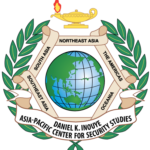Event: 10th Annual Women, Peace, and Security Symposium
Date: May 2, 2024
Location: U.S. Naval War College, Newport, RI
Abstract: This speech, delivered at the 10th Annual Women, Peace, and Security Symposium, explores the concept of allyship in advancing gender inclusivity within the security sector. Dr. James M. Minnich emphasizes the principles of “be, know, do,” highlighting the importance of character, awareness, and action in fostering a culture of belonging.
Imagine a powerful force deliberately restricting its strength by underutilizing almost 20% of its personnel. This is the reality facing the military, where outdated policies and biases prevent women from fully contributing their skills and expertise. Less than 50 years ago, women were restricted to just 2% of our military force. Despite progress, systemic barriers continue to limit the contributions of women today. True gender allyship is the key to unlocking this potential. It’s about cultivating an inclusive environment where everyone thrives, ensuring every service member has an equal opportunity to succeed.
This historical trajectory underscores a critical distinction: integration still expects women to adapt to a male-defined system, whereas true inclusion requires the system to evolve, leveraging the full potential of both men and women. The evolution from gender-segregated service to a more integrated force highlights our progress but reveals the necessity for a more profound cultural shift. At the heart of this transformation is gender allyship.
Gender allyship is a proactive stance, a journey toward fundamentally reshaping these frameworks to ensure every servicemember, regardless of gender, is valued and empowered. It’s about moving from a culture of compliance to one of commitment. A fundamental yet impactful framework propels gender allyship: “Be, Know, Do.”
Be: Character as the Foundation of Allyship
The first principle of allyship is “Be.” Be a leader of character committed to opposing practices that marginalize, exclude, and harm women. But what does it truly mean to “be” an ally? It starts with challenging our personal and institutional biases. It means acting on our beliefs in justice, equality, and dignity. Inclusivity becomes a core principle through our leadership, requiring the courage to change norms and value every member equally.
Trailblazing women face immense systemic barriers. Consider Lieutenant Colonel Robyn Fellowes, Australia’s first female Green Beret Commando. Despite her extraordinary achievement in passing the grueling qualification courses, her success led not to celebration but a policy change instantly barring women from that role. This deliberate undermining erased her accomplishments and discouraged future female candidates for the next 15 years.
This discrimination, fueled by outdated views, highlights the persistent sexism women routinely confront, like Lieutenant Colonel Fellowes, as well as Major Sandra Perron, Canada’s first female infantry officer, and Captain Jackie Munn, leader of a U.S. Cultural Support Team in Afghanistan. Their groundbreaking work underscores the need for allies who believe in and actively promote respect and inclusivity across the armed forces.
True allies don’t just talk about change; they drive change. Let’s ensure our policies reflect our commitment to equality and that our actions foster an environment where every service member thrives without bias or barriers. Let’s ensure the military—and our broader workplaces—are places where diversity is celebrated as a source of strength.
Know: Deep Insight to Perceive
The second principle of allyship is “Know.” True allyship demands that we develop the insights to perceive how systemic biases and discrimination create unwelcoming environments. Understanding these systemic barriers empowers us to change the broader context in which women serve, fostering a sense of true belonging.
These issues aren’t always obvious. They’re woven into institutional practices and long-standing norms. When we look at promotion cycles, deployment schedules, or parental leave policies, do we truly see structure built for equity, or do they unintentionally reinforce disadvantages?
Recognizing the impact of bias is crucial. It’s not just overt sexism but subtle assumptions about women’s strengths or career interests, jokes that create a hostile climate, or unconsciously overlooking qualified women. These biases, intentional or not, create significant obstacles.
True allyship demands a commitment to continuous learning and growth. Only then can we perceive these complex dynamics and become more effective allies in dismantling systemic obstacles to real belonging.
Do: Systemic Changes and Cultural Shifts to Achieve
The third principle of allyship is “Do.” We must transform our beliefs and perceptions into action to truly enact allyship. Action demands proactive steps. I propose these five actions for us to implement.
First, we must “Acknowledge Systemic Barriers.” This begins with recognizing the effects of unequal access to career-enhancing assignments, deployment cycles that disproportionately impact working mothers, biases within evaluations and promotions, and limited mentorship opportunities. These barriers reveal significant shortcomings in our current system.
Second, we need to “Challenge the “Merit” Myth.” We must dispel the notion of a purely merit-based system by ensuring women have equal access to career-enhancing opportunities. Implementing diversity training will enable leaders to identify and dismantle the systemic barriers that curtail women’s potential.
Third, we should “Build a Fair Pipeline.” By establishing clear paths for promotion and providing mentorship for all, we counteract the systemic biases that have historically restricted women’s progress.
Fourth, it is essential to “Scrutinize the Process.” We need to thoroughly examine our practices for hidden biases, particularly those embedded in performance evaluations and assignments.
Lastly, we must “Prioritize Equity.” We should question whether our decisions are truly based on objective criteria or if favoritism and bias subtly sway them. It’s vital to assess leaders based on their efforts toward diversity and inclusion and to ensure equitable representation in decision-making processes.
These actions, informed by our character and insight, drive us toward a truly inclusive culture where diversity and inclusion are integral to success. This approach demonstrates how our beliefs and perceptions catalyze transformative action, fostering a welcoming environment for everyone.
Conclusion: Power of “Believe, Perceive, Achieve” to Actionable Change
In conclusion, the principles of “be, know, do” lay the foundation of true allyship. Yet, to truly transform our military culture, we must integrate these principles with the empowering framework of “believe, perceive, achieve.”
Our journey is comprehensive, requiring us to believe in the value of every member, perceive systemic barriers to inclusion, and take decisive action to achieve positive change. This dedication will elevate our military to unprecedented levels of inclusivity and strength.
From essential to exemplary—this is the path of gender allyship in our military. By deeply embedding the “believe, perceive, achieve” principles into our ethos, we transform from a force that merely tolerates difference to one that thrives on it. Let’s embrace this challenge, not only because it’s necessary but because it unlocks our true potential. May this steadfast commitment to allyship define who we are. Let’s build a military where every member, irrespective of gender, feels valued, empowered, and integral. Together, we can establish a new standard for inclusion where diversity is not merely a statistic but the source of our greatest strength.
The views expressed in this article are those of the author and do not reflect the official policy or position of DKI APCSS, the Department of Defense, or the U.S. Government. The appearance of external hyperlinks does not constitute endorsement by the United States Department of Defense (DoD) of the linked websites, or the information, products, or services contained therein. DoD does not exercise any editorial, security, or other control over the information you may find at these sites.
June 2024
Published: June 10, 2024
Category: Perspectives
Volume:
Author: James M. Minnich



